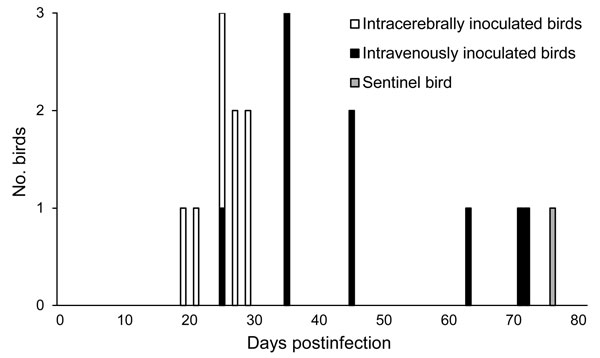Volume 18, Number 2—February 2012
Research
Pathogenesis of Avian Bornavirus in Experimentally Infected Cockatiels
Figure 1

Figure 1. Timing of the first detection of avian bornavirus (ABV) RNA in cockatiels that had been intracerebrally or intravenously inoculated with ABV. ABV RNA was amplified significantly earlier in samples from intracerebrally inoculated birds compared with intravenously inoculated birds (α = 0.005 by using the Wilcoxon-Mann-Whitney test). A noninoculated sentinel bird, which was housed with the intracerebrally inoculated group of cockatiels, was the last bird to shed ABV RNA.
Page created: January 17, 2012
Page updated: January 17, 2012
Page reviewed: January 17, 2012
The conclusions, findings, and opinions expressed by authors contributing to this journal do not necessarily reflect the official position of the U.S. Department of Health and Human Services, the Public Health Service, the Centers for Disease Control and Prevention, or the authors' affiliated institutions. Use of trade names is for identification only and does not imply endorsement by any of the groups named above.